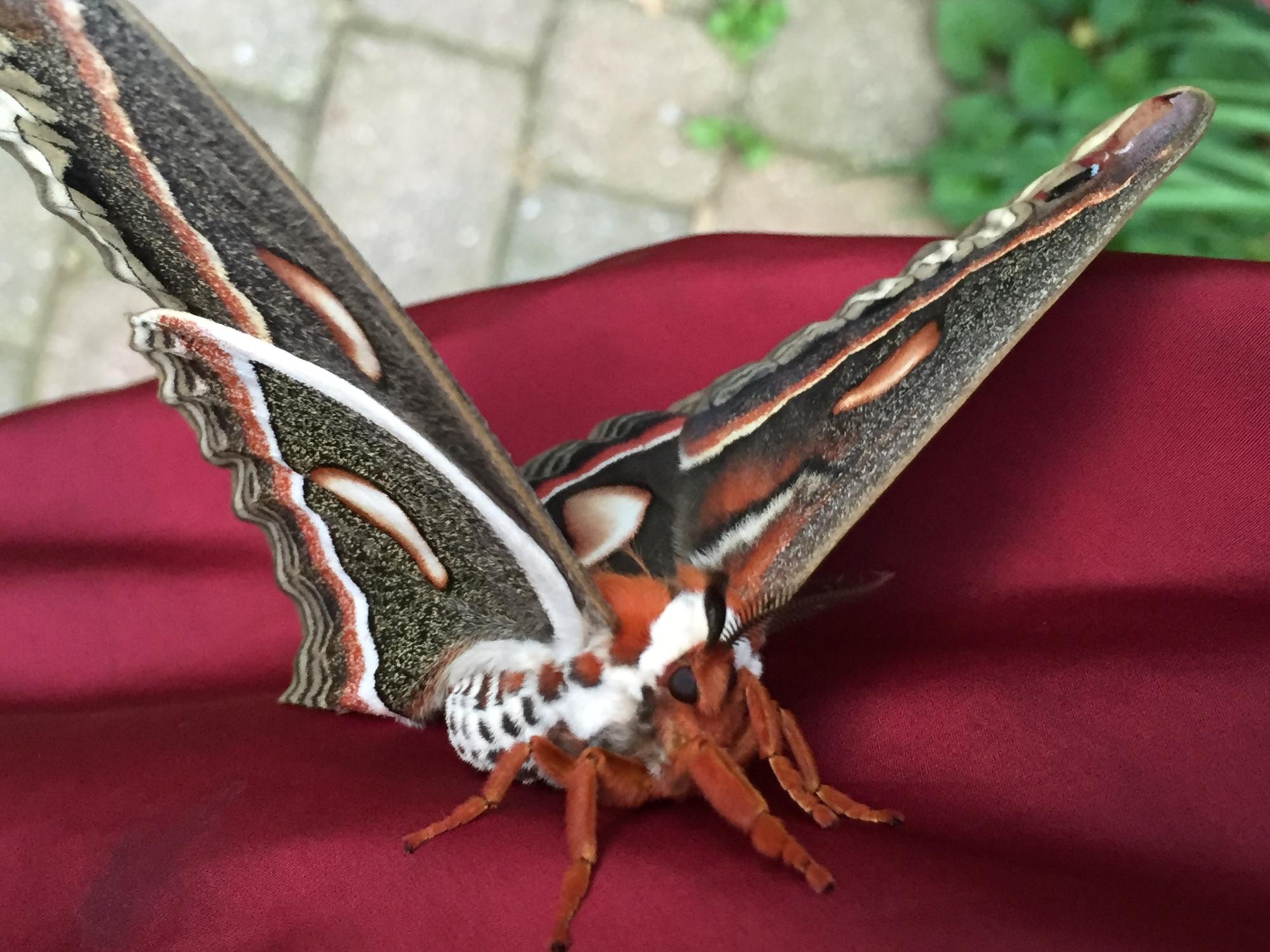CECROPIA Moth & POLYPHEMUS MOTH
Cecropia Moth. These huge insects are our largest resident moth species. They can have up to 6-inch wingspans, and this individual was pretty close to that size. Cecropia Moths fly primarily in June (also early July). They do not feed as adults, and they live for only about a week once they emerge from their cocoons.
Polyphemus Moth. This is another giant silkworm moth. It has four clear eyespots, one on each wing. These moths can be almost as large as the Cecropia moth.
This is the same Polyphemus Moth as above, with its wings closed. Photographed at the Cox Arboretum butterfly house.
From what I have read, Cecropia Moths are not as strongly attracted to lights as many other giant silkworm moths. However, this particular individual certainly seemed fascinated by my UV light. (All three Cecropia photos on this page show the same individual, found June 20, 2016.)
This is a photo of the Cecropia Moth perched on my shoulder, peering inquisitively at the camera. This moth flew away not long after the photo was taken. It was breathtaking to watch such a large moth soar into the trees.

The individual at left and below is a captive Polyphemus Moth at the Cox Arboretum butterfly house. Almost all of the photos on my website show wild insects, but I really like these two images. They show what a Polyphemus Moth looks like while it is resting in a tree during the day.
I found this Polyphemus Moth outside a store in Beavercreek. He was hanging on an outdoor light fixture, where I assume he had remained since the night before. Always check outdoor lights when heading into a restaurant, store, or gas station. You never know what you might find!

Polyphemus Moths fly from April through August. They come to lights, but I have only seen them on a few occasions. This one came to my black lights.